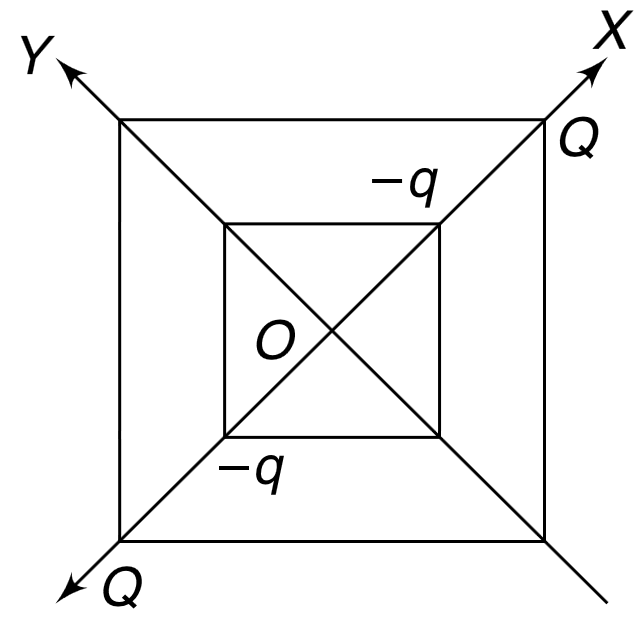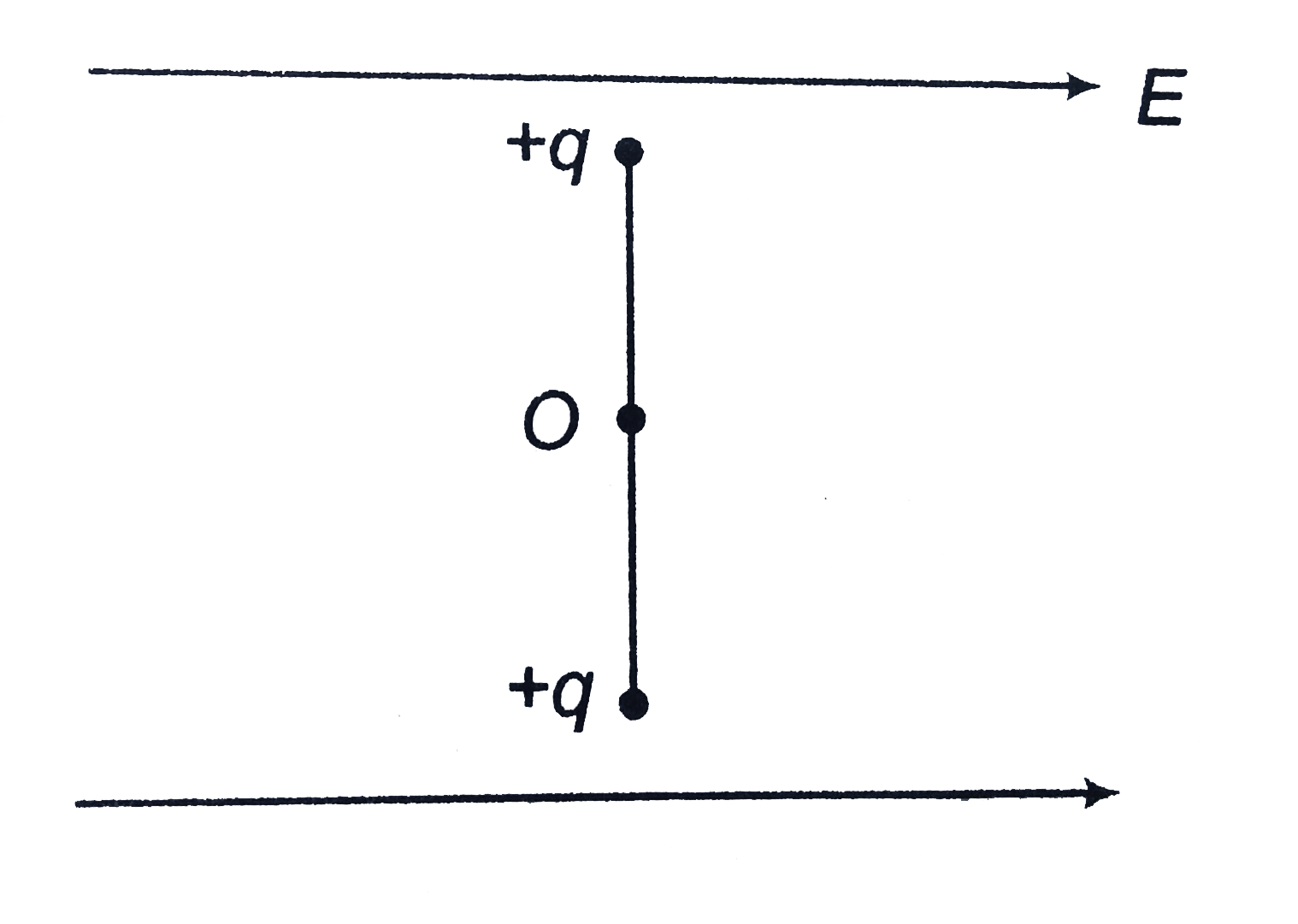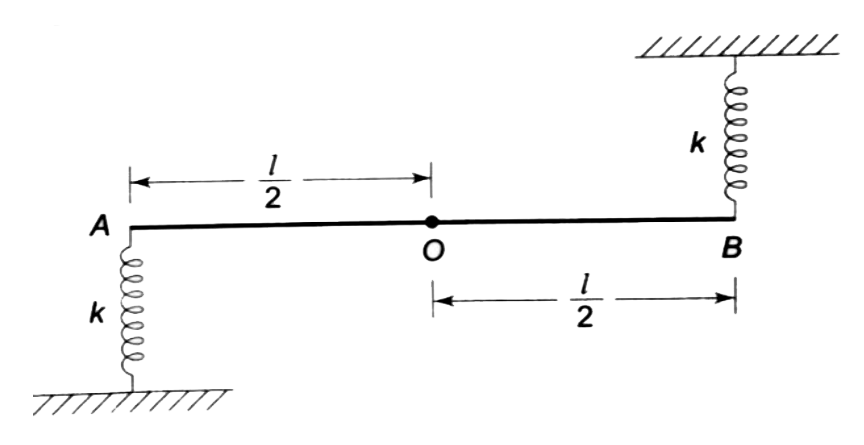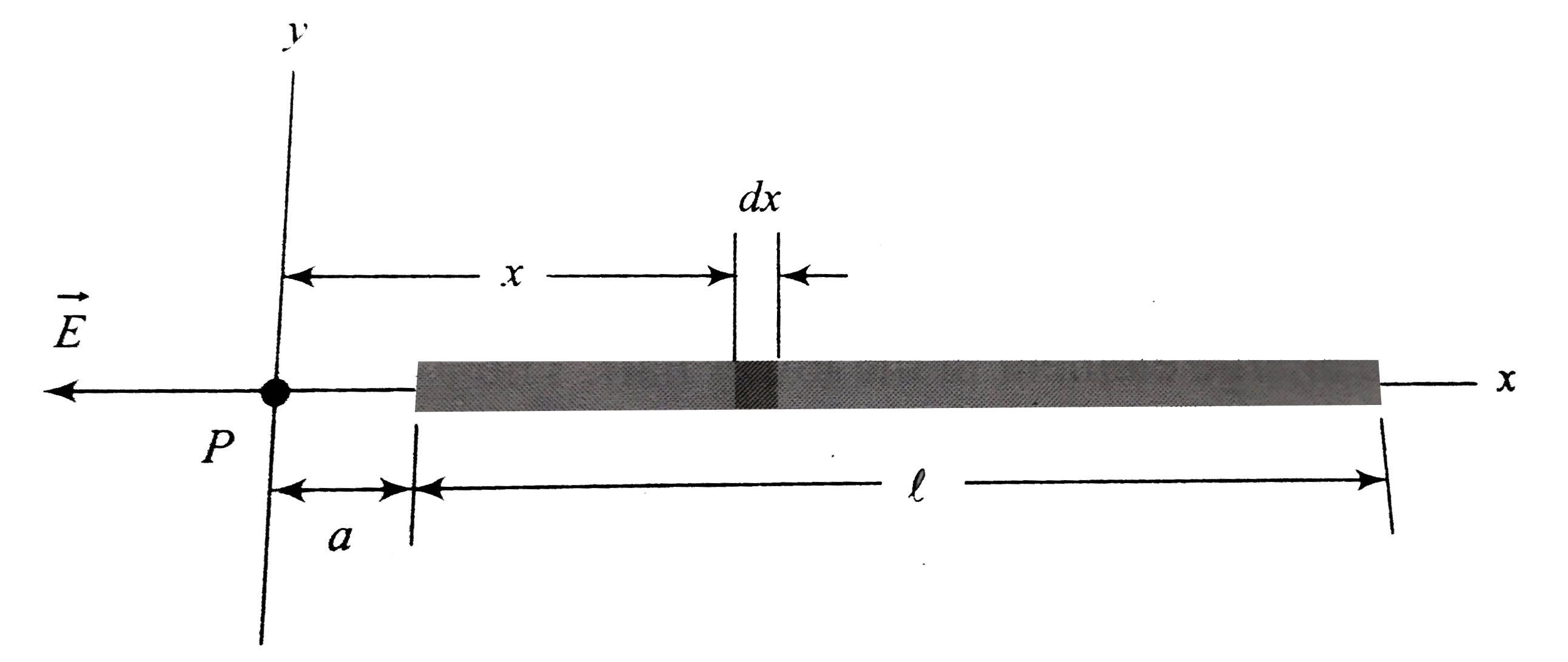Type insulated light rods of length l and 2l are placed in xy plane such their mid point is origin and they are free to rotate in xy plane about z-axis. Two + q charges are fixed at two ends of bigger rod and two - q charges are fixed at two ends of smaller rod.

Electric field a point (a, 0, 0) is E. Now if a >> t then
Eα1a2
Eα1a3
Eα1a3
Eα1a3
The correct Answer is:A
Topper's Solved these Questions
- ELECTROSTATICSBOOK - AAKASH SERIESCHAPTER - ELECTROSTATICSEXERCISE - LECTURE SHEET (EXERCISE - V) (LEVEL - II (ADVANCED) MATRIX MATCHING TYPE QUESTIONS)
2 Videos
- ELECTROSTATICSBOOK - AAKASH SERIESCHAPTER - ELECTROSTATICSEXERCISE - LECTURE SHEET (EXERCISE - V) (LEVEL - II (ADVANCED) INTEGER TYPE QUESTIONS)
1 Videos
- ELECTROSTATICSBOOK - AAKASH SERIESCHAPTER - ELECTROSTATICSEXERCISE - LECTURE SHEET (EXERCISE - V) (LEVEL - II (ADVANCED) MORE THAN ONE CORRECT ANSWER TYPE QUESTIONS)
4 Videos
- ELECTROMAGNETICSBOOK - AAKASH SERIESCHAPTER - ELECTROMAGNETICSEXERCISE - ADDITIONAL EXERCISE
6 Videos
- ELEMENTS OF VECTORSBOOK - AAKASH SERIESCHAPTER - ELEMENTS OF VECTORSEXERCISE - QUESTIONS FOR DESCRIPTIVE ANSWERS
9 Videos
Similar Questions
Two square of sides a and 2a are placed in xy plane with their centers at the origin. Two charges, – q each, are fixed at the vertices of smaller square (lying on X axis). Two charges, Q each, are fixed at the vertices of bigger square on the X axis (see figure). (a) Find work required to slowly move the larger square to infinity from the position shown. (b) Find work done by the external agent in slowly rotating the inner square by 90∘ about the Y axis followed by a rotation of 90∘ about the Z axis.

View SolutionA rod is hinged (free to rotate) ast its centre O as shown in figue. Two point charge +q and +q are kept at its two ends. Rod is placed in uniform electric field E as shown. Space is gravity free. Choose the correct options.

View Solution
Knowledge Check
A rod is hinged (free to rotate) ast its centre O as shown in figue. Two point charge +q and +q are kept at its two ends. Rod is placed in uniform electric field E as shown. Space is gravity free. Choose the correct options.
 Anet force from the hinge on the rod is zerrBnet force from he hinge onn the rod is leftwardsCEquilibrium of rod is neutralDEquilibrium of rod is stable
Anet force from the hinge on the rod is zerrBnet force from he hinge onn the rod is leftwardsCEquilibrium of rod is neutralDEquilibrium of rod is stableAn insulating rod of length I carries a charge q distrubuted uniformly on it. The rod is pivoted at its mid-point and is rotated at a frequency f about a fixed axis perpendicular to the the rod and passing through the pivot . The magnetic moment of the rod system is
A112πqfl2Bπqfl2C16πqfl2D13πqfl2
An insulating rod of length l and charge carries q distributed uniformly on it. The rod is pivoted at its one end and it rotated with angular velocity omega about a fix axis perpendicular to the rod and passing through the pivot. The magnetic moment of rhe system is
View SolutionAn insulating rod of length I carries a charge q distrubuted uniformly on it. The rod is pivoted at its mid-point and is rotated at a frequency f about a fixed axis perpendicular to the the rod and passing through the pivot . The magnetic moment of the rod system is
View SolutionAn insulating rod of length I carries a charge q distrubuted uniformly on it. The rod is pivoted at its mid-point and is rotated at a frequency f about a fixed axis perpendicular to the the rod and passing through the pivot . The magnetic moment of the rod system is
View SolutionThe ends of a rod of length l and mass m are attached to two identical springs as shown in the figure. The rod is free to rotate about its centre O . The rod is depressed slightly at end A and released . The time period of the oscillation is

View SolutionA rod of length l, has a uniform positive charge per unit length and a total charge Q. calculate the electric field at a point P located along the long axis of the rod and at a distance a from one end

View SolutionA rod of length l, has a uniform positive charge per unit length and a total charge Q. calculate the electric foeld at a point P located along the long axis of the rod and at a distance a from one end

View Solution
